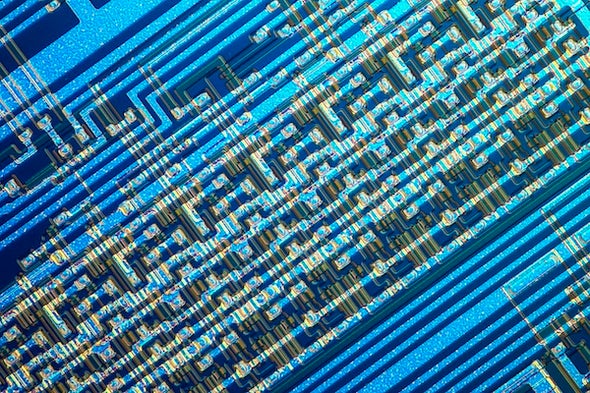Tiny Computers Could Transform Our Lives
By TheWAY - 1월 14, 2019
Tiny Computers Could Transform Our Lives
And they’re getting closer to the marketplace all the time

Credit: Alfred Pasieka Getty Images
Remember Innerspace, the comedy sci-fi movie from the ‘80s about a microscopic manned pod injected into a human? Although we’re years away from launching submarines inside our bodies, advances in engineering have made it possible to build computers so tiny that embedding them inside living tissue is no longer a figment of a sci-fi writer’s imagination. Indeed, it’s now been 20 years since British scientist Kevin Warwick first implanted a silicon RFID transmitter into his arm to remotely control computers in doors, lights and other devices. He then took it a step further by interfacing the device with his own nervous system to control a robotic arm, earning himself the nickname “Captain Cyborg.”
While it’s not headline news every day, the pace of microcomputer technology has not slowed, and I’m still occasionally astounded by the ingenuity of some new developments.
For example, earlier this year, a team at the University of Michigan led by professor of electrical and computer engineering David Blaauw used an energy-efficient processor built by the company I work for, Arm, to construct the world’s smallest computer.
Measuring just 0.3 mm to a side, the device is just one tenth the size of the previous record holder, a solar-powered computer no larger than a grain of salt. Because temperature and pressure sensors can be built into the new device, Blaauw’s team envisions that, among other applications, it could be implanted into tumors to determine whether they shrink after chemotherapy treatments. (Studies show that tumors may have slightly higher temperatures than healthy tissue.)
Although the development of tiny computers is exciting, there are obstacles preventing them from being deployed widely in health and other sectors. One of the biggest problems is building batteries small enough to power the devices. As the size of batteries decreases, the amount of energy they store also shrinks dramatically. The batteries needed for tiny computers are significantly smaller than the conventional small batteries used to energize other devices such as pacemakers and cochlear implants—and, says Blaauw, their capacity may be a thousand times less.
One possible solution is to find ways for devices to recharge themselves frequently. For example, beams of infrared light can remotely recharge sensors implanted in laboratory mice. Scientists are also researching how to create electricity for tiny computers using a technique known as thermoelectric energy harvesting, though they have not yet found success at such a small scale. For this latter method to work, there needs to be a temperature difference between two surfaces of a device, but the new tiny computers are so small that it’s hard to make any one part much warmer than any other. Other methods still under investigation include harnessing glucose molecules as a power source.
An effective solution is simply to conserve the small amount of power that can be stored on a tiny battery. Blaauw and his team have learned that they can drastically reduce power usage by only waking the computers up periodically to make calculations, then putting them to sleep again.
In addition to maximizing the amount of time that tiny computers are asleep, engineers can reduce power usage by cutting back on how much electricity the computers draw while awake. Blaauw and his team were able to reduce the resting power consumption of their computer to an infinitesimal 30 picowatts—300 trillionths of a watt—by modifying which transistors they used; reducing the size of some of the circuits; and making some circuit optimizations.
The small size and reduced power draw of tiny computers means nothing, of course if the data they gather can't be properly communicated. This process, too, had to be modified by Blaauw and his team to consume as little electricity as possible. By turning on a radio antenna for transmission bursts lasting only a few billionths of a second, the computers can make themselves known without too much energy expenditure. “In order for a radio to be heard, it has to scream pretty loudly,” Blaauw said. “What we've essentially done is instead of screaming all the time, we just scream a short blip.”
If teams like Blaauw’s can overcome the technological obstacles, tiny computers could one day revolutionize more than just tumor detection. For example, CubeWorks, a company spun off from the University of Michigan’s Michigan Micro Mote (M3) initiative, has developed a system of networked micro-sensors that can be embedded into objects we use every day such as smart home systems, wind farms, and devices to monitor glucose levels, and then linked to the Internet of Things (IoT). Powered by the sun, these computers can gather information about the temperature and pressure of their environments, as well as take digital images and track motion within a given area. One day, systems like these may transform how we interact with everything from the buildings we live in to the clothes we wear.
Though we still may not be able to launch submarines inside our bodies, millimeter-sized computers will likely make it to market in the next decade—and begin to have a major impact on the world.
source : https://blogs.scientificamerican.com/observations/tiny-computers-could-transform-our-lives/



0 개의 댓글